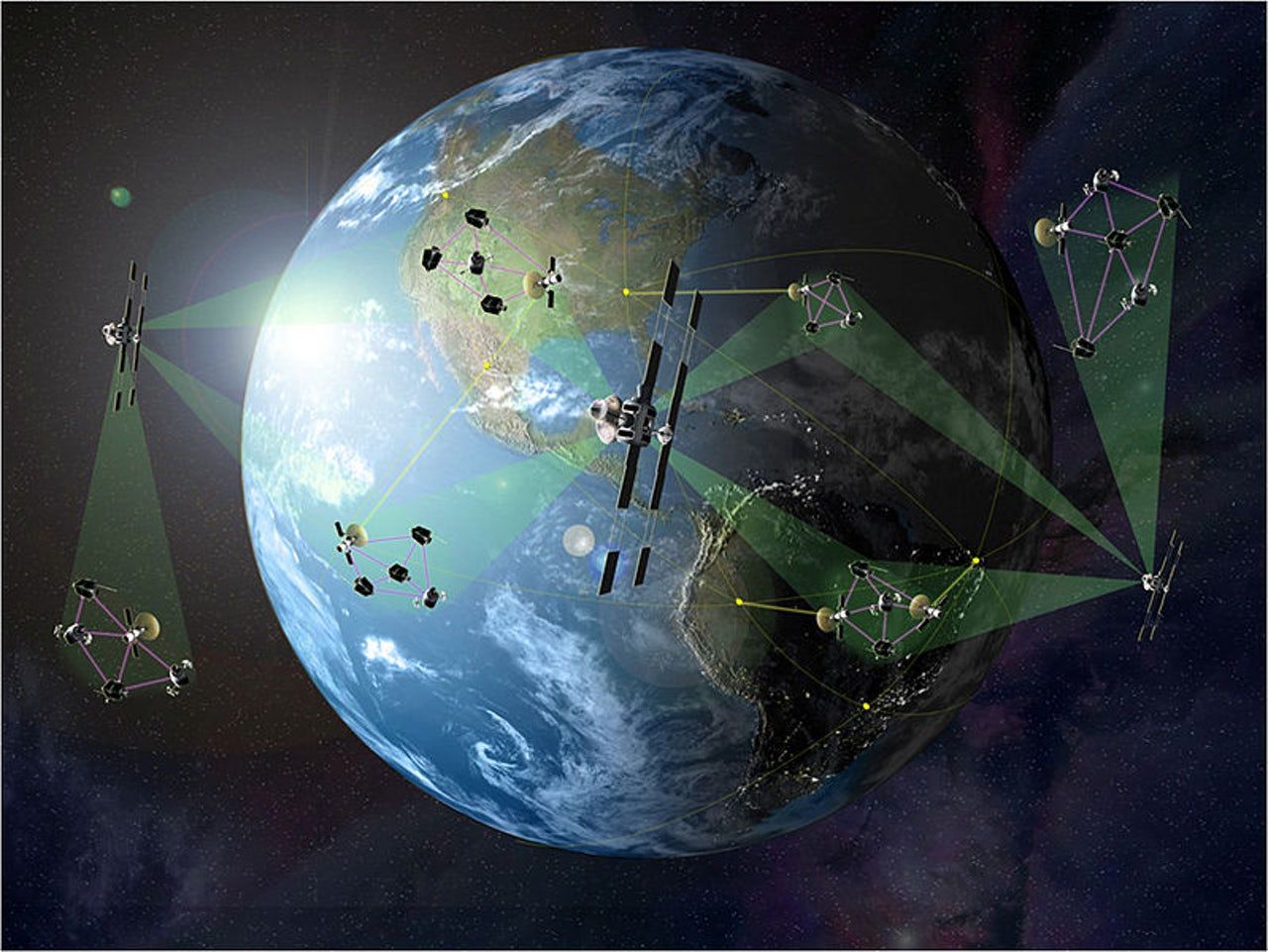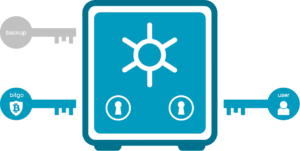Get started with these growing tech trends here.




Perfect vision is great. But like any advantage it comes with limitations. Those with ease don’t develop the same unique senses and strengths as someone who must overcome obstacles, people like Lana Awad, a neurotech engineer at CTRL-labs in New York, who diagnosed her own degenerative eye disease with a high school science textbook as a teen in Syria and went on to teach at Harvard University.
Though they see themselves as clear leaders, visionaries with all the obvious advantages—like Elon Musk and Mark Zuckerberg, for example—can be blind in their way, lacking the context needed to guide if they don’t recognize their counterintuitive limitations. This is problematic for humanity because we’re all relying on them to create the tools that increasingly rule every aspect of our lives. The internet is just the start.
Tools that will meld mind and machine are already a reality. Neurotech is a huge business with applications being developed for gaming, the military, medicine, social media, and much more to come. Neurotech Report projected in 2016 that the $7.6 billion market could reach $12 billion by 2020. Wired magazine called 2017, “a coming-out year for the brain machine interface (BMI).”

Speaking at London’s British Library, Dorsey said; ‘The world ultimately will have a single currency, the internet will have a single currency.
‘And I believe that it will be bBtcoin’, he said.
The Twitter founder’s talk was centred around Dorsey’s new payments firm, Square, which allows merchants to take payments via smartphones and tablets.

For all of us, the act of being and thinking requires a network of complex support. The late physicist’s disability made it visible.
Midnight. As I was browsing the internet, I saw, like shooting stars, emails suddenly appear and disappear from the right-hand corner of my computer screen. The first from CNN announcing the death of Stephen Hawking, the second from an editor at The Atlantic asking me to write about him.
I had written about the man for 10 years—as a biographer of some sort, or an anthropologist of science to be more precise, studying the traces of Hawking’s presence. But now I felt a powerless inertia, unable to write anything. I didn’t think I would be affected by his death, but it touched me deeply. I was overwhelmed by the numerous articles that started to appear all over the world doing precisely what I had studied for so long and so carefully: recycling over and over again the same stories about him. Born 300 years after the death of Galileo Galilei, holder of Cambridge’s Lucasian Chair of Mathematics (once held by Isaac Newton), and now … died on the same day Albert Einstein was born. The life paths of history’s most iconic scientists intersected in weird ways. The puzzle seemed complete: Hawking had fully entered the pantheon of the great.

On Thursday, Robert O. Work, a former deputy secretary of defense, will announce that he is teaming up with the Center for a New American Security, an influential Washington think tank that specializes in national security, to create a task force of former government officials, academics and representatives from private industry. Their goal is to explore how the federal government should embrace A.I. technology and work better with big tech companies and other organizations.
Older tech companies have long had ties with military and intelligence. But employees at internet outfits like Google are wary of too much cooperation.
John Oliver is a crossover who bridges the art of a comedian with the reporting and perspective of a liberal political pundit. Even detractors acknowledge that Oliver addresses serious issues with unusual wit and humor.
I never thought Oliver could (or would) tackle the topic of cryptocurrency—at least not with value to the viewer. It is too geeky, and too esoteric. (It also cuts into my mission of evangelism and education). smile
He did, and he sparkles! Feel free to jump past the fluff. The Bitcoin tutorial starts at 3:40. Of course, my friend, Shechter, in Long Island New York will bust a gut over what Oliver says at 9:40. It is not only clear and concise, it is accurate and terribly funny!
Whether you are a Bitcoin newbie or a seasoned blockchain coder, this is the video you have been looking for. This one is durable.
Related Videos:

Today, I was asked to answer this question at Quora:
“What sets each cryptocurrency apart from the others?”
“Cryptocurrency” is a broad term. It refers to payment coins, of course—such as Bitcoin and Litecoin. But, because most tradeable tokens attain an asset value, the word is often used to refer to smart contract devices, such as Ethereum, a host of other blockchain based tokens, functional Internet-of-Things tokens, and even ICOs (Initial Coin Offerings). Since people treat ICOs and IOT tokens as investment instruments even if they are useless as a payment mechanism, they all fall within the realm of a cryptocurrency.
So, before addressing the question, let’s distinguish between Altcoins and ICOs. I assume the question refers to Altcoins, and not ICOs…
ICOs are almost all scams. A very few of these are designed to function in a well-defined IOT role (Internet-of-Things). But, any ICO that you are likely to hear about share one or more traits described here.
But Altcoins are different. These are typically forked from Bitcoin or another established blockchain-backed coin. They are created because developers feel that they have solved one or more of the problems that limit the growth or appeal of Bitcoin. For example, Bitcoin has (or recently had) all these problems or perceived limitations:
 One big problem facing Bitcoin is that the distributed consensus mechanism that makes it a trusted, peer-to-peer mechanism is based on Proof-of-Work (POW). Coupled with a mining incentive that increases dramatically with exchange rate, Bitcoin is—quite simply—untenable. With consumption topping 33 terawatt hours in December 2017, it already consumes more power than some countries. If even 2% of the world’s payment transactions were settled in Bitcoin, the mining would consume more power than is generated throughout the world. This just cannot continue!
One big problem facing Bitcoin is that the distributed consensus mechanism that makes it a trusted, peer-to-peer mechanism is based on Proof-of-Work (POW). Coupled with a mining incentive that increases dramatically with exchange rate, Bitcoin is—quite simply—untenable. With consumption topping 33 terawatt hours in December 2017, it already consumes more power than some countries. If even 2% of the world’s payment transactions were settled in Bitcoin, the mining would consume more power than is generated throughout the world. This just cannot continue!
Fortunately, developers and armchair inventors have proposed or demonstrated clever POW alternatives to achieve a fair distributed consensus. Some of these use a Proof-of-Stake mechanism, while others add a limited central-authority nexus to facilitate governance and scaling. Some are built on a modified blockchain that weaken several pillars of a true decentralized, p2p network. Of course, researchers are concerned that these systems deteriorate the decentralized nature of Satoshi’s original blockchain.
But, other systems may allow for a fully distributed and democratic trust platform, such as BFT Replication (IBM) or Distributed Objective Consensus, which was proposed by an amateur mathematician.
In reply to the title question, Altcoins are set apart by their claim to address the above problems & limitations, or to add features.
Will an Altcoin Triumph over Bitcoin?
Perhaps, a few altcoins will thrive, due to specific niche advantages; features that Bitcoin chooses not to address, such as deep anonymity or with a novel utilitarian feature that facilitates a specific Internet-of-Things process.
Unfortunately for altcoins, all coins require public trust and transparency. For this reason, they are open source, permissionless, without licensing, without patent protection and with a fully disclosed pre-mining history. And for that reason, Bitcoin is free to steal any clever advantage that works. It’s all up for grabs and no one can be sued.
In effect, each altcoin as a beta test platform for Bitcoin. Now that Bitcoin is finally addressing the problems of scalability and fair/speedy governance, there is little doubt that it will continue to dwarf other coins.
Philip Raymond sits on Lifeboat’s New Money Systems board. He co-chairs CRYPSA, hosts the New York Bitcoin Event and is keynote speaker at Cryptocurrency Conferences around the world. Book a presentation or consulting engagement.

A new section about Bitcoin ATM business models
has been added. Jump to “UPDATE – July 2019”
The good news is that building a Bitcoin ATM is easy and less expensive than you might expect. But, offering or operating them engulfs the assembler in a regulatory minefield! It might just be worth sticking to selling bitcoin on PayPal (visit this website for more information on that). You might also wish to rethink your business model—especially user-demand scenarios. See our 2019 update at the bottom of this article.
A photo of various Bitcoin ATMs appears at the bottom of this article. My employer, Cryptocurrency Standards Association, shared start-up space at a New York incubator with the maker of a small, wall mounted ATM, like the models shown at top left.
What is Inside a Cryptocurrency ATM?
You could cobble together a Bitcoin ATM with just a cheap Android tablet, a camera, an internet connection, and [optional]: a secure cash drawer with a mechanism to count and dispense currency).* A receipt printer that can also generate a QR code is a nice touch, but you don’t really need one. You can use your screen for the coin transfer and email for a receipt.
Of course your programming and user interface makes all the difference in the world. And your ATM must interface with an exchange—yours or a 3rd party exchange.
If your plan is to sell Bitcoin and not exchange it for cash, then you don’t need a currency dispensing component at all. You only need a credit card swipe-reader and an RFI tap reader. Some models are smaller than a cookie and sell for under $30. They can be attractively embedded into your machine. In fact, some bank card processors offer them without cost.
I Have Built a Prototype. Now What?
Desktop ATM. No cash dispensedOnce you have a working prototype, you will need to test it with focus groups (alpha test) and at prospective public sites (beta test). You must also harden the production model against tamper and theft and find paying businesses or property owners, so that you can achieve economies of scale. (A reasonable business model requires that you produce dozens of devices each month).
Parts Cost: Bill of Materials
At scale, you can achieve a unit production cost of less than $200. But that’s for a desktop unit that does not accept or dispense cash. A high-quality and attractive machine that accepts cash and is free standing or ready for outdoor installation into a building exterior might cost you $650. You could sell these for $2,500 plus recurring fees to the property owner, depending on venue, or you might simply lease them, just as Xerox did in the early days of office copiers. (In a hotly competitive market, such as Las Vegas, you may need to pay a portion of your profits to the site, rather than profiting from ‘renting’ the ATM).
A Threat to Your Business

But wait! Before you run off and create an ATM venture of your own, with visions of a 350% profit margin, all is not as easy as it seems!…
Cryptocurrency ATMs intersect with a minefield of regulatory licensing and compliance standards. In many regions, they are not even legal for placement in a public area.
In most countries (including all of USA), you must be a registered Money Transmitter. You will need separate state licensing and—since you are moving cash in or out of the banking system—you must be partnered with a federally chartered bank. You will also need to post a hefty insurance bond—perhaps even for each machine and each municipality in which it is placed! These laws convey liability to both your client (a property owner) and to you. Many courts will hold the manufacturer of financial or medical products accountable for ensuring that their customers are licensed and compliant with regulations. That is, you may not be able to legally sell your ATM to organizations that have not demonstrated that they qualify to operate one.
Why is There a Camera in my ATM?
In all cases, you must capture photographs of your user and their state-issued ID, because you are required to know your customer and adhere to a slew of anti-money laundering practices. For example, with transactions larger than $2,000 (from anyone who is not known to you and a regular client), you must generate a Suspicious Activity Report. For transactions larger than $10,000, you must comply with RICO (Racketeer Influenced and Corrupt Organizations Act). This requires a camera, interview, and reporting process. You will be generating forms with data supplied by your user and possibly even a real-time verification of the facts they provide.
If you wonder why you needn’t do these things this when buying or selling your own cryptocurrency, it is because: (a) You are trading your own assets and are not the custodian of customer accounts; and (b) You are a consumer. It is likely that the exchange is required to do all of these things.
With Regulations, Can Bitcoin ATMs Generate Profit?
For the reasons described above, the operational cost of deploying and operating an ATM network (or your equipment for sale or rent) is significantly higher than the up front hardware cost. When you add the need to protect your venture from legal claims arising from process glitches or users that claim they lost cash or Bitcoin, you may arrive at an operational cost that makes your business model unworkable.
Of course, Bitcoin ATMs are profitable in some cases. I have consulted with a few start ups that operate them successfully in Las Vegas casinos, a few airports and race tracks, and at large outdoor fairs. But, for everyday use, the heyday of ATMs is most likely 5 or 10 years off. Before this happens, we need a more uniform and functional regulatory & insurance framework, and a higher volume of users per ATM.
Check out various Bitcoin ATM models below. Few manufacturers turn a profit. In the end, it boils down to location (high volume sites with the right people) and location (legal jurisdiction).
* One ATM startup found inexpensive hardware for dispensing currency by recycling mechanisms from bill-change machines used in game arcades or in hotels next to vending machines. These machines are being discarded, because newer vending machines accept credit cards and smart phone payment. But again, if you only plan to accept a credit or debit instrument for Bitcoin, then you don’t need a cash counter or dispenser.
UPDATE – July 2019: ATM Business Model Requires Urgency
The economics of Bitcoin ATMs is thoroughly uncompelling, unless you own or administer a public area with high foot traffic. Even with lots of traffic, the business model has a problem…
Bitcoin is easily acquired and exchanged online—both legally and illegally. Often, I urgently need to find a bank ATM, especially when travelling. But, despite being an avid proponent and adopter of cryptocurrency, I can’t imagine needing a crypto ATM. Needing virtual exchange is rarely urgent, and there are better alternatives than standing in front of a machine. After all, we each have a better machine in our pockets.
 Online trading is easier and safer than via ATM. Even user anonymity is better online than standing in a public place and using a kiosk equipped with a camera.
Online trading is easier and safer than via ATM. Even user anonymity is better online than standing in a public place and using a kiosk equipped with a camera.
Therefore, the business model of placing equipment requires scenarios in which the needs of prospective clients have urgency. Urgency adds significant value to local service. But again, there is a problem…
The problem with using urgency to build a local delivery model for ATMs, is that Bitcoin is a virtual product. Even a seller or exchange in China can deliver an online money exchange instantly.
Consider this reverse analogy…
Suppose that you are responsible for setting up a video projector in a hotel ball-room. The conference is already in progress and hundreds of people are looking toward a blank movie screen. You suddenly discover that your video cable is defective and wireless options will not work . You need an HDMI cable and a thunderbolt adapter immediately. It must be at least 18 feet long and be a recent model to support the audio channels and resolution of your presentation.

The local Best Buy store has the cable in stock. It’s $89.99 and the store can have it at the front desk in the next 10 minutes. Your frugal partner finds the same cable online for $29.99 (2-day delivery) or $9.50 shipped from China (about 2 weeks).
Which do you choose? Is it just a cable that you need? No! The value that you require is a compatible a cable in your hands within minutes — preferably with a local and experienced vendor, in case there is a problem.
In almost any scenario—even catering to impulse buyers—a Bitcoin ATM can’t match the value of someone delivering a compatible cable instantly. If it is a commodity that you are selling (Bitcoin is a commodity), then a profitable business model requires that you sell speed, convenience or privacy. Cryptocurrency ATMs lose on all three fronts.
That last paragraph above is my freebie to the next ATM vendor who seeks my consulting services. Test your model, before seeking help in penetrating a market that is tough to define and defend.
Ellery Davies co-chairs CRYPSA, hosts the New York Bitcoin Event and is keynote speaker at Cryptocurrency Conferences around the world. Book a presentation or consulting engagement.

Legacy Method of Inheriting Assets
Many Bitcoin owners choose to use a custodial account, in which the private keys to a wallet are generated and controlled by their exchange—or even a bank or stock broker. In this case, funds are passed to heirs in the usual way. It works like this…
An executor, probate attorney, or someone with a legal claim contacts the organization that controls the assets. They present a death certificate, medical proxy or power-of-attorney. Just as with your bank account or stocks and bonds, you have the option of listing next of kin and the proportion of your assets that should be distributed to each. These custodial services routinely ask you to list individuals younger than you and alternate heirs, along with their street addresses, in the event that someone you list has died before you.
Of course, Bitcoin purists and Libertarians point out that the legacy method contradicts the whole point of owning a cryptocurrency. Fair enough.
Multisig to the Rescue
Using multisig would be far easier, if wallet vendors would conform to standards for compatibility and embed technology into hardware and software products. Unfortunately, they have been slow to do so, and there are not yet widely recognized standards to assure users that an implementation is both effective and secure. But, there is some good news: It’s fairly easy to process your ordinary account passwords and even the security questions with a roll-your-own multisig process. I’ve done it using PGP and also using Veracrypt—two widely recognized, open source encryption platforms.
This short article is not intended as an implementation tutorial, but if the wallet vendors don’t jump up to home plate, I may release a commercial tool for users to more easily add multisig to their wallets. It really is safe, simple and effective. (If readers wish to partner with me on this? I estimate that it will take $260,000 and about six months).
What is Multisig and How Does it Protect your Wealth?
Multisig allows anyone with credentials to an account, wallet or even a locked safe to create their own set of rules concerning which combinations of friends and relatives can access their assets without the original owner. The owner sets conditions concerning who, when, how much and which accounts can be accessed — and the heirs simply offer passwords or proof of identity. If implemented properly, it doesn’t matter if some of the heirs have forgotten passwords or died before the original owner.
This can be illustrated in an example. I am intentionally describing a complex scenario, so that you consider a full-blown implementation. Although the ‘rules’ listed below appear to be complex, the process for creating the associated passwords is trivial.
The last 2 rules listed below do not use Multisig technology, but rather Smart Contracts. It enhances an owner’s ability to dictate terms. Here, then, is the scenario…
I want heirs to have access to my assets
at banks, brokers, exchanges or other ac–
counts–but only under certain conditions:
 Again, the decedent’s wishes are complex, but executing and enforcing these rules is trivial. In my presentations, I describe the method on two simple PowerPoint slides. Even that short description is sufficient to show anyone who has used common cryptography apps to weave their own multisig add-on.
Again, the decedent’s wishes are complex, but executing and enforcing these rules is trivial. In my presentations, I describe the method on two simple PowerPoint slides. Even that short description is sufficient to show anyone who has used common cryptography apps to weave their own multisig add-on.
Of course, each individual will need to locate their own secret password, but a biometric or other conforming proof-of-identity can be substituted. Even if several survivors cannot recall their credentials, the multisig method allows other combinations of individuals to access the assets across all accounts.
This article may leave you wondering about the legal process—and this is where I agree with the Libertarian viewpoint: Sure! The courts have a process and heirs should document their access and decisions for tax purposes and to assure each other of fair play. But a key benefit of cryptocurrency and the disintermediation offered by the blockchain is the personal empowerment of access with impunity and without waiting for any legal process.
Let the courts to what they do, while you honor the wishes of your dearly departed.
If this article generates sufficient interest, I may prepare a short tutorial on how to split off your own Multisig passwords, regardless of which wallet or hosted services you use. It will work with any vendor, app or gadget —or— Perhaps, I will refine my homespun solution and offer it as an add-on app that can be used with any wallet, bank account or exchange. Simple, ubiquitous and effective multisig should have been available to even traditional banking customers years ago!
Philip Raymond co-chairs CRYPSA, hosts the New York Bitcoin Event and presents at
Crypto Conferences around the world. Book a presentation or consulting engagement.